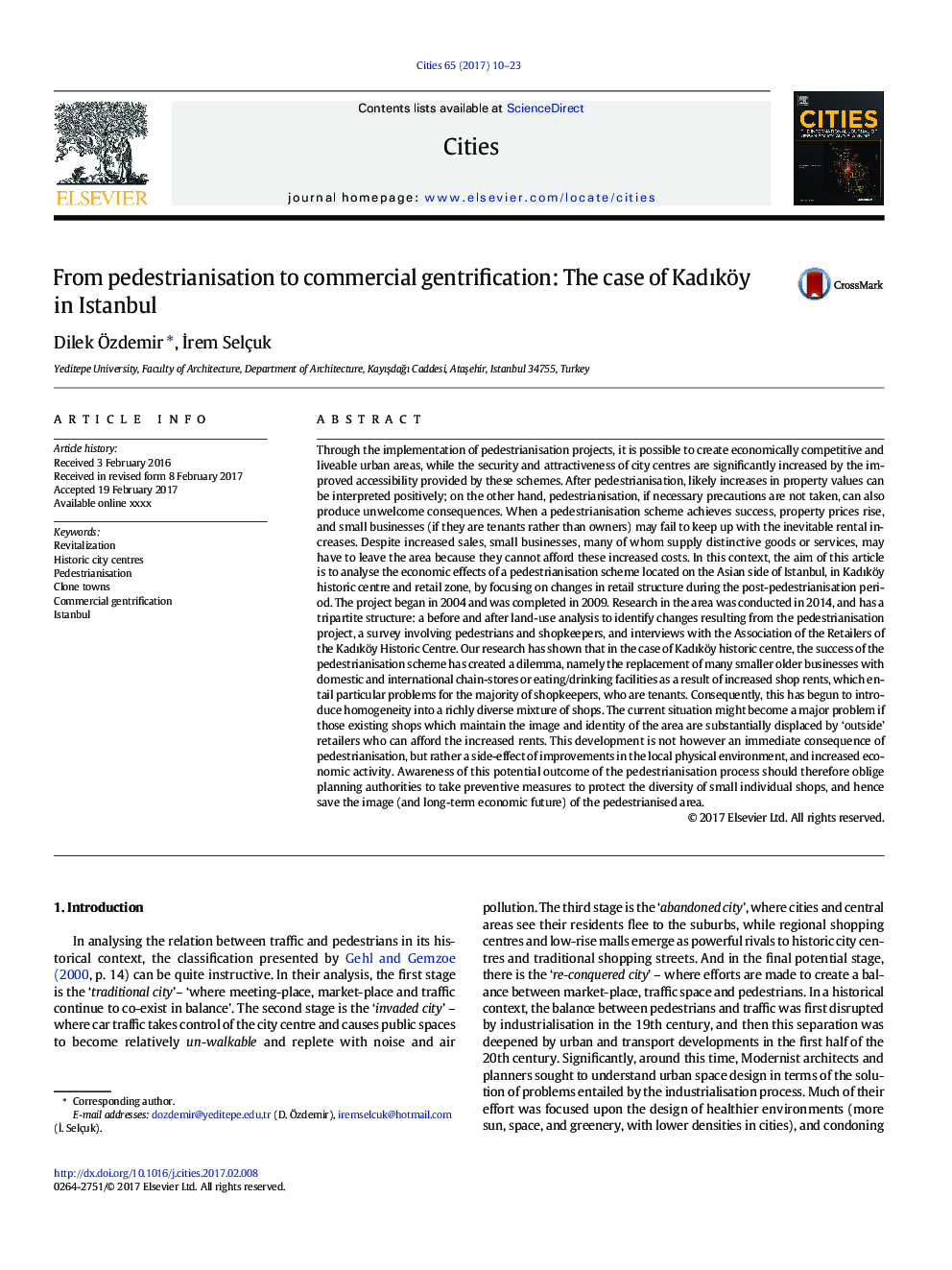| کد مقاله | کد نشریه | سال انتشار | مقاله انگلیسی | نسخه تمام متن |
|---|---|---|---|---|
| 5108086 | 1482331 | 2017 | 14 صفحه PDF | دانلود رایگان |
عنوان انگلیسی مقاله ISI
From pedestrianisation to commercial gentrification: The case of Kadıköy in Istanbul
دانلود مقاله + سفارش ترجمه
دانلود مقاله ISI انگلیسی
رایگان برای ایرانیان
کلمات کلیدی
موضوعات مرتبط
علوم انسانی و اجتماعی
مدیریت، کسب و کار و حسابداری
گردشگری، اوقات فراغت و مدیریت هتلداری
پیش نمایش صفحه اول مقاله

چکیده انگلیسی
Through the implementation of pedestrianisation projects, it is possible to create economically competitive and liveable urban areas, while the security and attractiveness of city centres are significantly increased by the improved accessibility provided by these schemes. After pedestrianisation, likely increases in property values can be interpreted positively; on the other hand, pedestrianisation, if necessary precautions are not taken, can also produce unwelcome consequences. When a pedestrianisation scheme achieves success, property prices rise, and small businesses (if they are tenants rather than owners) may fail to keep up with the inevitable rental increases. Despite increased sales, small businesses, many of whom supply distinctive goods or services, may have to leave the area because they cannot afford these increased costs. In this context, the aim of this article is to analyse the economic effects of a pedestrianisation scheme located on the Asian side of Istanbul, in Kadıköy historic centre and retail zone, by focusing on changes in retail structure during the post-pedestrianisation period. The project began in 2004 and was completed in 2009. Research in the area was conducted in 2014, and has a tripartite structure: a before and after land-use analysis to identify changes resulting from the pedestrianisation project, a survey involving pedestrians and shopkeepers, and interviews with the Association of the Retailers of the Kadıköy Historic Centre. Our research has shown that in the case of Kadıköy historic centre, the success of the pedestrianisation scheme has created a dilemma, namely the replacement of many smaller older businesses with domestic and international chain-stores or eating/drinking facilities as a result of increased shop rents, which entail particular problems for the majority of shopkeepers, who are tenants. Consequently, this has begun to introduce homogeneity into a richly diverse mixture of shops. The current situation might become a major problem if those existing shops which maintain the image and identity of the area are substantially displaced by 'outside' retailers who can afford the increased rents. This development is not however an immediate consequence of pedestrianisation, but rather a side-effect of improvements in the local physical environment, and increased economic activity. Awareness of this potential outcome of the pedestrianisation process should therefore oblige planning authorities to take preventive measures to protect the diversity of small individual shops, and hence save the image (and long-term economic future) of the pedestrianised area.
ناشر
Database: Elsevier - ScienceDirect (ساینس دایرکت)
Journal: Cities - Volume 65, May 2017, Pages 10-23
Journal: Cities - Volume 65, May 2017, Pages 10-23
نویسندگان
Dilek Ãzdemir, Ä°rem Selçuk,